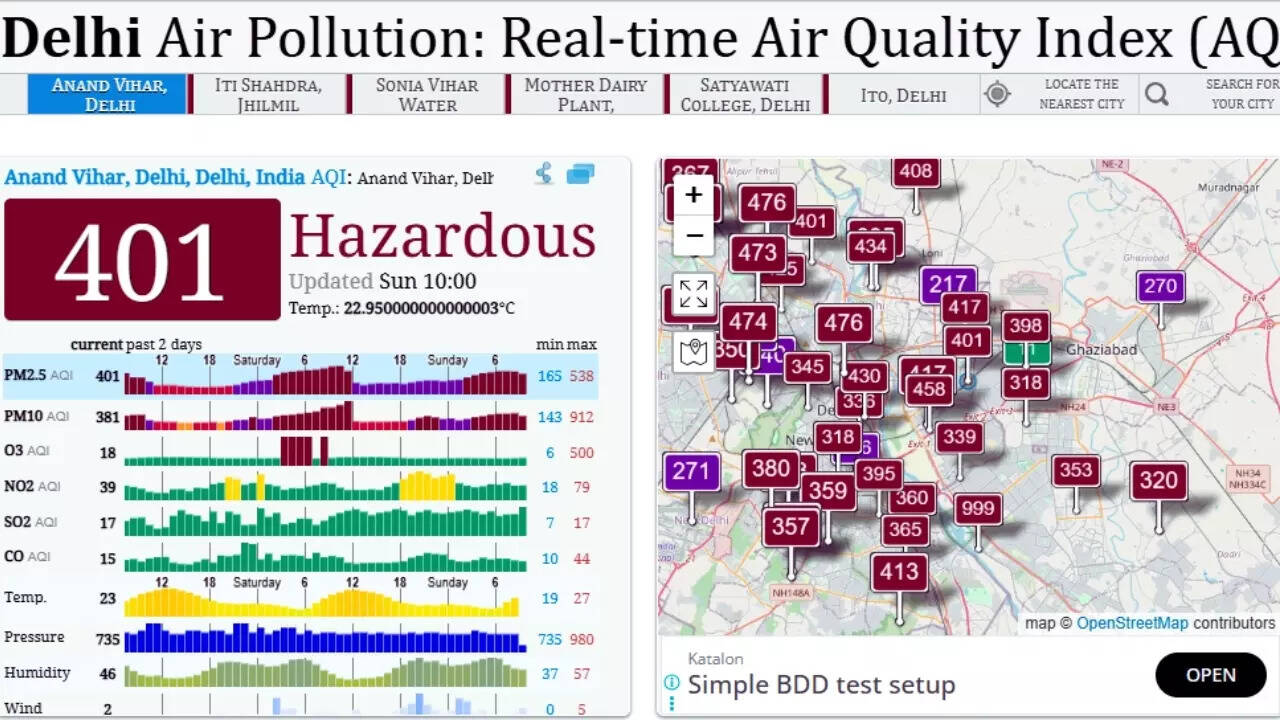ARTICLE AD BOX

A dense blanket of toxic smog once again descended upon the national capital over the weekend, pushing the city’s Air Quality Index (AQI) into the “severe” category and making Delhi the most polluted city in India.
Despite the alarming deterioration in air quality and a Supreme Court directive mandating stricter curbs, the authorities are yet to impose Stage III of the Graded Response Action Plan (GRAP) — a crucial set of emergency measures designed to combat severe air pollution.By 7 a.m. on Sunday, the Central Pollution Control Board (CPCB) recorded an overall AQI of 391 for Delhi, while several monitoring stations reported readings well above the 400 mark.
The city woke up to an acrid, smoky haze that drastically reduced visibility, worsened respiratory discomfort, and left residents struggling to breathe.

Major neighbourhoods across the capital recorded “severe” pollution levels:
- Bawana: 436
- Patparganj: 425
- RK Puram: 422
- Sonia Vihar: 415
- Anand Vihar: 412
- Alipur: 415
- Chandni Chowk: 409
These figures far exceed the “safe” range of 0-100, defined by the CPCB. The toxic fog has also affected nearby cities such as Noida, Gurugram, and Ghaziabad, where AQI levels similarly hovered between 380 and 420.

Cold wave and rainfall worsen air quality dynamics
As temperatures dropped overnight, pollutants from vehicles, open fires, and construction activities settled in the lower atmosphere, forming a thick layer of haze. The visibility in central and northern parts of Delhi reportedly dipped below 200 metres early Sunday morning, disrupting road and air traffic.According to the India Meteorological Department (IMD), the city is expected to witness cold mornings and low wind speeds over the next few days, which may further prevent dispersion of pollutants.In the “severe” range, the air quality is so poor that it can cause coughing, throat irritation, and eye burning within minutes of exposure. Long-term exposure can trigger several medical complications.
Why GRAP III has not been implemented
Despite crossing the “severe” threshold, Delhi and its neighbouring regions have not yet enforced GRAP Stage III restrictions.The Graded Response Action Plan (GRAP) is a framework developed by the Commission for Air Quality Management (CAQM) to address escalating pollution levels in the Delhi-NCR region.
It prescribes specific actions based on real-time air quality data.
- Stage I (Poor): Bans on waste burning, intensified road cleaning, and strict construction dust control.
- Stage II (Very Poor): Ban on diesel generator sets, increased parking fees, and mechanised street sweeping.
- Stage III (Severe): Suspension of construction activities, closure of brick kilns, and ban on entry of polluting trucks.
- Stage IV (Severe+): Closure of schools, offices, and vehicular restrictions under the odd-even scheme.
Under the revised guidelines, Stage III measures are to be activated once AQI exceeds 350, while Stage IV is imposed when it surpasses 400.Civic agencies, meanwhile, have begun water sprinkling, mechanical road sweeping, and dust suppression drives at busy intersections. The Delhi government has instructed the Public Works Department (PWD) and the Municipal Corporation of Delhi (MCD) to intensify cleaning operations and deploy anti-smog guns at pollution hotspots.
Delhi declared India’s most polluted city
According to the latest CPCB data, Delhi topped the list of India’s most polluted cities. The national capital’s AQI averaged over 400, while other northern cities remained in the “very poor” range.The air quality early-warning system predicts that Delhi’s AQI will remain in the “very poor” to “severe” range over the next three to four days, with little likelihood of major improvement until wind speeds pick up.

 4 days ago
6
4 days ago
6








 English (US) ·
English (US) ·